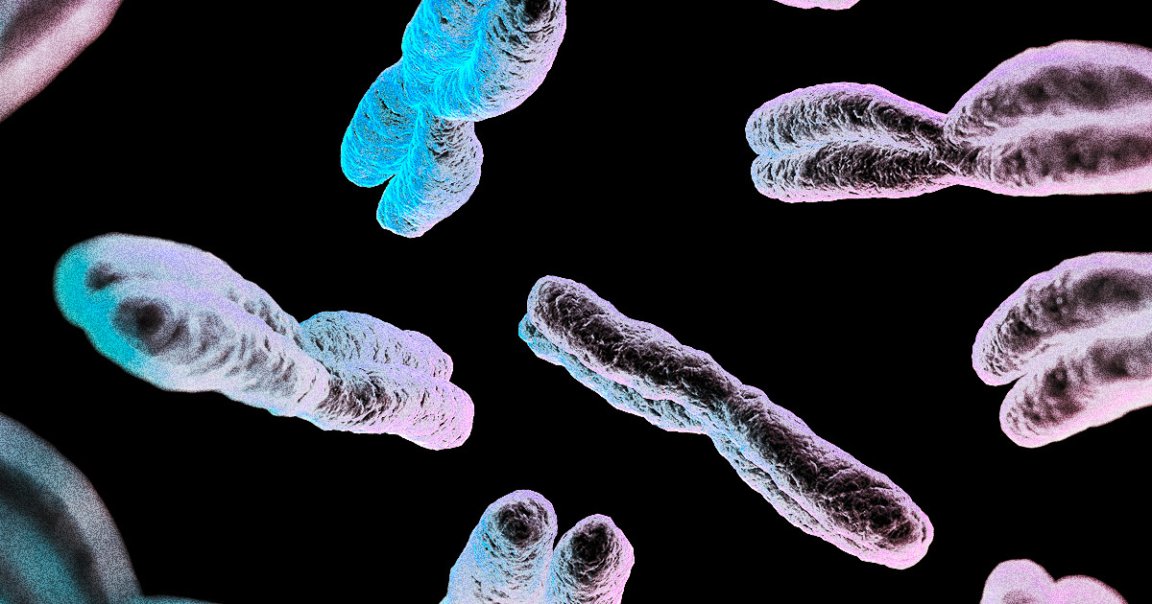
The human Y chromosome, the determinant of male sex, has finally been completely sequenced. What it unveils could prove crucial to understanding the Y chromosome’s puzzling origins, and — pertinently — how it affects male fertility.
You can thank two teams of researchers for the breakthrough, who published their findings in a pair of separate studies in the journal Nature on Wednesday.
To some, this news may be confusing. The Human Genome Project announced twenty years ago that it had fully sequenced human DNA, and it was a big deal then — so what gives?
The reality is that 2001 announcement may have been a little premature. There were still a few gaps, mainly in the two sex chromosomes, X and Y — though in the opinion of many geneticists, those gaps were impossible to decipher with the technology available at the time.
“The Y chromosome just kept being pushed aside,” Charles Lee, director of the Jackson Laboratory for Genomic Medicine in Connecticut, and co-author of one the studies detailing the sequences, told New Scientist.
Humans typically have 23 pairs of chromosomes, 46 in total. The X and Y chromosomes are different from the rest. When paired, as XY, they develop a male child. Put two Xs together, and a female develops.
Part of the appeal of tackling the Y chromosome in particular is how cryptic it is, as it’s believed to have evolved far more rapidly than its counterpart. As a consequence, it’s also accumulated an enormous amount of repetitive, seemingly junk DNA. Compared to the X, the Y chromosome also carries far fewer protein-coding genes.
The X chromosome only got the full sequencing treatment three years ago, using a new form of tech that allowed scientists to read thousands — or even millions — of DNA bases in one go. Before, scientists could only painstakingly glean a couple hundred.
That technology is what now made it possible to decode the even more cryptic Y chromosome. If you think of the Y chromosome as a jigsaw puzzle, imagine it having millions of pieces nearly indistinguishable from the rest, which all must be placed in the exactly correct order, and not interchangeably. That’s what scientists were up against.
But if you can gather thousands of these DNA pieces already assembled in big chunks, the challenge becomes a little easier. Along with the fully sequenced chromosome, an additional 43 Y chromosomes, gathered from a diverse selection of males, were extensively sequenced.
“The biggest surprise was how organized the repeats are,” said coauthor of one of the studies Adam Phillippy at the National Human Genome Research Institute, in a statement about the work.
“It could have been very chaotic, but instead, nearly half of the chromosome is made of alternating blocks of two specific repeating sequences known as satellite DNA,” he added. “It makes a beautiful, quilt-like pattern.”
One key area of the Y chromosome that was decoded is known to affect sperm production. The repetitions in the Y’s genes in this area can sometimes disrupt male fertility. With a complete sequence, scientists can determine exactly why that is.
Overall, the combined research determined that this specific Y chromosome has 106 protein-coding genes. 42 were found that were new, but many still appear to be repeats. Follow-up research will have to determine if all that repetitive DNA can be salvaged from its reputation as mere ‘junk’ — but now that it’s been fully mapped out, keen researchers worldwide will have a lot to work with.
More on genetics: Henrietta Lacks’ Family Is Finally Getting Paid by the Biotech Company That Stole Her Cells